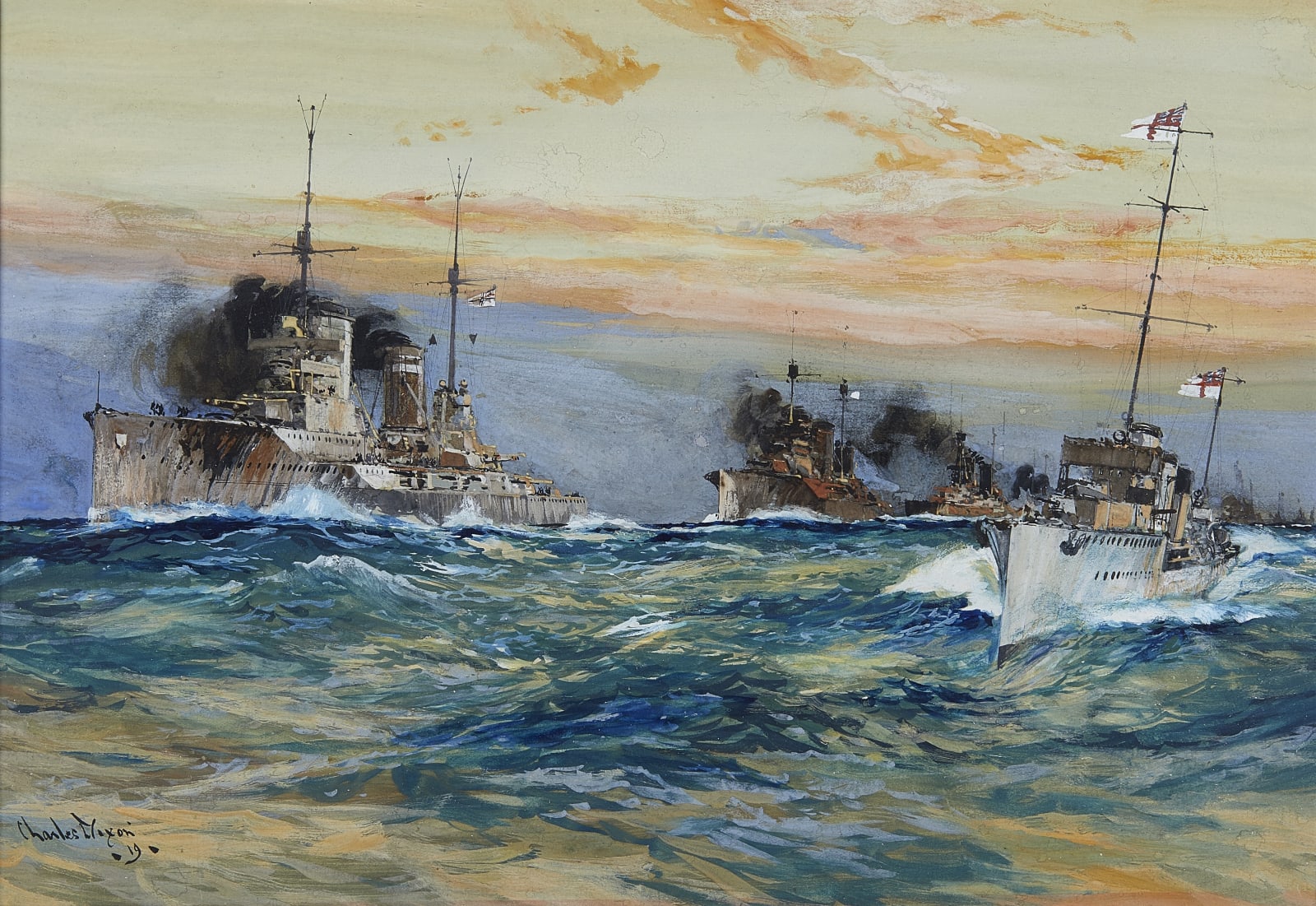Charles Edward Dixon, RI 1872-1934
Two weeks before the Armistice was signed on 11th November 1918, Admiral Hipper's bold plan for one last decisive strike against the British Grand Fleet was thwarted by a mutiny of his own crews who felt the War was already lost. Within a week, his entire fleet was flying the 'red flag' (of Communism) and all the ships, as well as the naval dockyards at Kiel and Wilhelmshaven, were under the control of delegates of the 'Soviet of Workers, Soldiers and Sailors'. Under the terms of the Armistice, which the Soviet was forced to accept, German warships were to be interned under Allied surveillance in the Royal Navy's main fleet anchorage at Scapa Flow in the Orkneys and this work depicts its final humiliating journey.
The German fleet, the second largest in the world, sailed from Wilhelmshaven on 20th Novmeber under the command of Admiral von Reuter and formed itself into a single column stretching over 50km in length for the slow journey up through the North Sea.
The Grand Fleet, with Admiral Beatty in command, put to sea early on the morning of 21st November and, upon reaching open water, formed up into two gigantic parallel columns to await the German ships which were sighted soon after 8.00am. By 9.30am, the light cruiser H.M.S. Cardiff had led them to the pre-appointed posistion through the two columns of the Grand Fleet, and Beatty turned his fleet 16 points westwards to escort the enemy into harbour. The arrangements were flawless and the German ships were all at their designated anchorages in the Firth of Forth by noon. Four days later, the transfer to Scapa Flow began and, by 27th Novmeber, every German ship - each one manned by only a token crew - was at her semi-permanent mooring and awaiting its fate.
